
Mini2P miniature microscope and ScanImage
ScanImage software from MBF Bioscience, along with the accompanying vDAQ acquisition and control card with analog to digital, digital to analog,

The vDAQTM is an all-in-one card and breakout box that’s engineered to provide the most advanced and dependable microscope control and data acquisition. Designed to work with ScanImage software, it can be used to control galvos, resonant scanners, Pockels cells, piezo objective positioners, stages, shutters and much more. Its breakout box greatly simplifies the wiring complexity of microscopes by eliminating the need for additional 3rd party DAQ hardware. The vDAQ is the control center for the most cutting-edge multiphoton microscopes, from customized DYI to leading commercial systems. The vDAQ is a lot of card for the money.
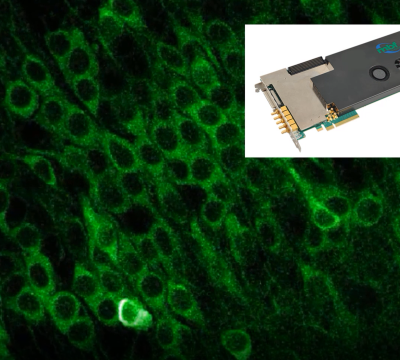
vDAQ is an all-in one data acquisition/control system platform designed for demanding microscope-based applications that require high bandwidth analog signal digitization combined with high accuracy analog output.
Combining various IO options onto a single FPGA platform enables low latency closed-loop control regimes. vDAQ includes a powerful Xilinx Kintex UltraScale FPGA for high-performance real-time processing of data. vDAQ is available in two configurations – Standard and High-Speed.
On-board DDR3 DRAM and a high-speed PCI Express host interface provide flexible options for storing and transferring high bandwidth data streams. vDAQ comes with required cables and breakout accessory for signal connections.
The High-Speed vDAQ
The vDAQ is also available in an even higher sample-rate configuration.
vDAQ is powered by a Xilinx Kintex UltraScale XCKU035 FPGA. The cutting edge UltraScale architecture is the first to offer ASIC-like clock distribution. Efficient routing resources facilitate higher device logic utilization to maximize computing potential.
Connection to the host PC is provided through a PCI Express Gen. 3 x4 interface, which offers up to 4 GB/s data throughput. vDAQ™software supports 64 bit scatter-gather DMA data transfer.
vDAQ includes 4 GB of onboard DDR3 DRAM operating at 1600 MHz. Memory interface is capable of 12 GB/s throughput for local buffering of data.
vDAQ supports up to 4 PMT channels, sampled up to 125MHz, 14bit, synchronization to laser clock, 12 analog inputs, 12 analog outputs, and 32 Digital IO’s
High-speed Analog Input
vDAQ includes high-speed analog input channels accessible from SMB terminals on the rear connector panel of the PCI Express card installed in the PC. Channels support switchable input ranges and an optional low pass filter that can be enabled by software with a variable cutoff frequency. Table 1 details the specifications of the high-speed analog input channels.
Table 1:
| Specification | Unit | vDAQ | High-Speed vDAQ |
| Number of Channels | 4 | 2 | |
| Channel Resolution | Bits | 14 | 12 |
| Sampling Rate Range | MHz | 62.5 - 125 | 2000-2700 |
| Timing/Synchronization | Simultaneously Sampled | Simultaneously Sampled | |
| Input Range | Vpp | 0.5 - 2 | 1-2 |
| Input Impedance | Ω | 50 | 50 |
| Low Pass Filter Cutoff Frequency | MHz | 1 - 63, FBW (Bypass) | N/A |
| Overvoltage Protection | V | ± 10 | ± 7.4 |
Precision Analog Input
vDAQ includes precision analog input channels accessible from BNC connectors on the breakout accessory. Table 2 details the specifications of the precision analog input channels.
Table 2:
| Specification | Unit | |
| Number of Channels | 12 | |
| Channel Resolution | Bits | 16 |
| Max. Sampling Rate | MHz | 1 |
| Timing/Synchronization | Simultaneously Sampled | |
| Input Range | Vpp | 0.5 - 2 |
| Input Impedance | GΩ | 50 |
| Overvoltage Protection* | V | ± 25 |
*Overvoltage Protection rating only valid when vDAQ is powered on
Precision Analog Output
vDAQ includes precision analog output channels accessible from BNC connectors on the breakout accessory. Table 3 details the specifications of the analog output channels.
Table:3
| Specification | Unit | |
| Number of Channels | 12 | |
| Channel Resolution | Bits | 16 |
| Max. Sampling Rate | MHz | 2 |
| Timing/Synchronization | Independent | |
| Output Range | V | ± 10 |
| Output Current Drive | mA | 20 |
Digital Input/Output
vDAQ offers digital input/output lines divided into four groups. Two groups offer individual direction control for each line while the other two groups are group direction controlled. All DIO lines use 5V TTL logic level signaling. All digital lines are accessible from BNC connectors on the breakout accessory. Tables 4 and 5 detail the digital channel specifications.
Table 4:
| Specification | Unit | Minimum | Typical | Maximum |
| Channels Per Group | 8 | |||
| Direction Control | Independent | |||
| Input Low Logic Level | V | 1.0 | ||
| Input High Logic Level | V | 2.3 | ||
| Output Low Logic Level | V | 0.0 | 0.6 | |
| Output High Logic Level | V | 4.4 | 5.0 | |
| Output Current Drive | mA | -16 | 16 | |
| Absolute Voltage Range | V | -0.5 | 5.5 |
Table 5
| Specification | Unit | Minimum | Typical | Maximum |
| Channels Per Group | 8 | |||
| Direction Control | Group | |||
| Input Low Logic Level | V | 0.8 | ||
| Input High Logic Level | V | 2.0 | ||
| Output Low Logic Level | V | 0.0 | 0.8 | |
| Output High Logic Level | V | 4.0 | 5.0 | |
| Output Current Drive | mA | -24 | 16 | |
| Absolute Voltage Range | V | -0.5 | 6.5 |
Clock Synthesis
vDAQ includes an onboard clock synthesis module for synchronizing high-speed analog front end to external clock sources. An external clock source can be connected at the SMB terminal on the rear connector panel of the PCIe card installed in the PC. External clocks can be multiplied and delayed in 370ps steps. Table 6 details the specifications of the clock input.
Table 6:
| Specification | Unit | |
| Input Frequency | MHz | 1 - 425 |
| Input Impedance | Ω | 50 |
| Input Voltage | Vpp | 0.4 - 5.0 |
Compatibility Requirements
vDAQ requires a desktop PC with one PCI Express x8 slot. While a physical x8 slot is required, only x4 link width will be utilized. One six pin PCI Express power connector is required. Power capacity of PC power supply should also be considered when adding vDAQ™to a PC. vDAQ™will draw 5 – 20 W depending on design loaded on FPGA. The host PC must run Microsoft Windows 10 or Windows 11 operating system.
The vDAQ is also available in an even higher sample-rate configuration. With 2 channels sampling at up to 2.7GHz per channels, the High-Speed vDAQ is the perfect tool for time correlated single photon counting with sub ns dead time, simultaneous photocurrent integration and photon counting, and time demultiplexing with up to 32 bins for an 80MHz laser source.
| Feature Description | vDAQ™ | High-speed vDAQ™ | ||
|---|---|---|---|---|
| Xilinx Kintex UltraScale FPGA | ||||
| 12 Analog Inputs - 1MHz, 16bit | ||||
| 12 Analog Outputs - 2MHz, 16bit | ||||
| 32 Digital IOs | ||||
| 4GB DDR3 RAM | ||||
| 4GB/s data transfer rates | ||||
| synchronization to laser clock | ||||
| 4 PMT channels, sampled up to 125MHz, 14bit | ||||
| 2 PMT channels, sampled up to 2.7GHz, 12bit | ||||
| time correlated single photon counting with sub ns dead time | ||||
| simultaneous photocurrent integration and photon counting | ||||
| time demultiplexing with up to 32 channels relative to external clocks as low as 80kHz |
vDAQ is used across the globe by the most prestigious laboratories.















ScanImage software from MBF Bioscience, along with the accompanying vDAQ acquisition and control card with analog to digital, digital to analog,
MBF’s software utility is underscored by the number of references it receives in the worlds most important scientific publications. See examples below:
Ament, S. A., M. Cortes-Gutierrez, et al.
A single-cell genomic atlas for maturation of the human cerebellum during early childhoodView Publication

Stimpson, C. D., J. B. Smaers, et al.
Evolutionary scaling and cognitive correlates of primate frontal cortex microstructureView Publication
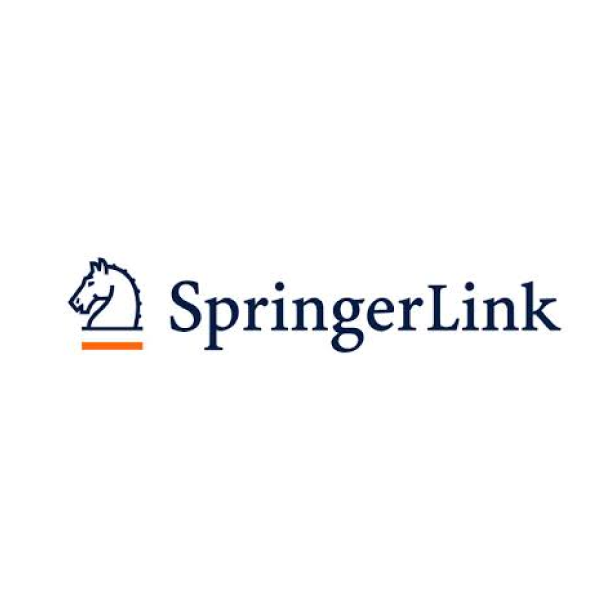
da Silva, S. P., C. C. M. de Castro, et al.
Neuropathological and sociodemographic factors associated with the cortical amyloid load in aging and Alzheimer’s diseaseView Publication

Zhang, X., C. Wang, et al.
Analysis of Error Sources in the Lissajous Scanning Trajectory Based on Two-Dimensional MEMS MirrorsView Publication
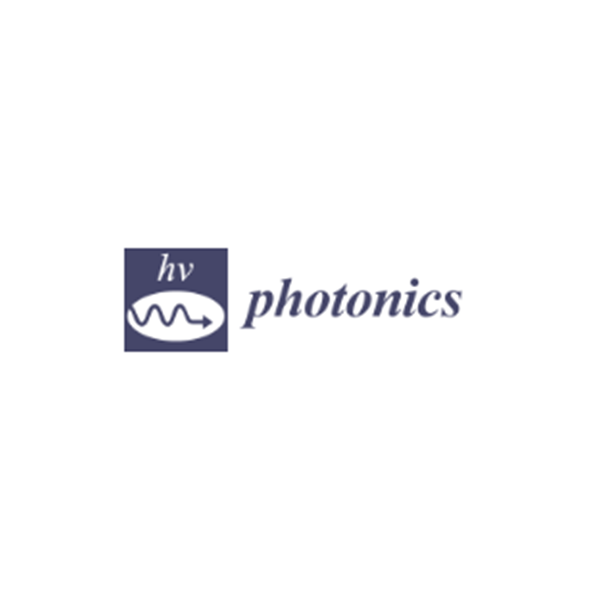
Nasu, Y., A. Aggarwal, et al.
Lactate biosensors for spectrally and spatially multiplexed fluorescence imagingView Publication

Jovanoski, K. D., L. Duquenoy, et al.
Dopaminergic systems create reward seeking despite adverse consequencesView Publication

Pang, Y., M. Li, et al.
Preliminary study on the E-liquid and aerosol on the neurobehavior of C. elegansView Publication
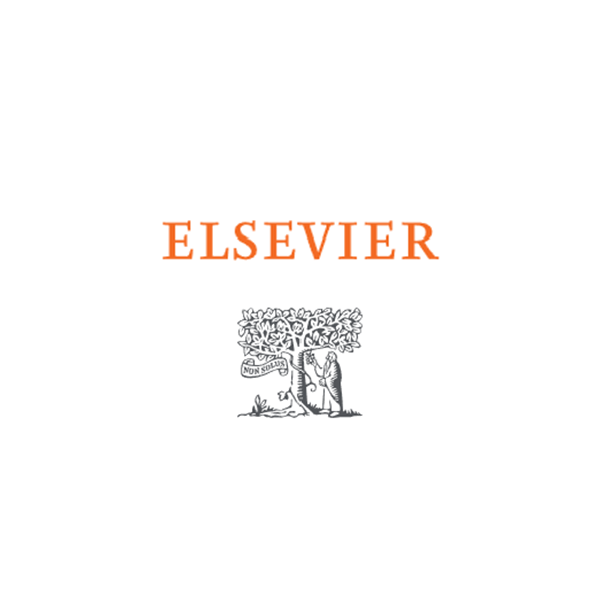
Zong, W., Obenhaus, H., Skytøen, E., Eneqvist, H., De Jong, N., Vale, R., . . . Moser, E. (2022)
"Large-scale two-photon calcium imaging in freely moving mice"View Publication
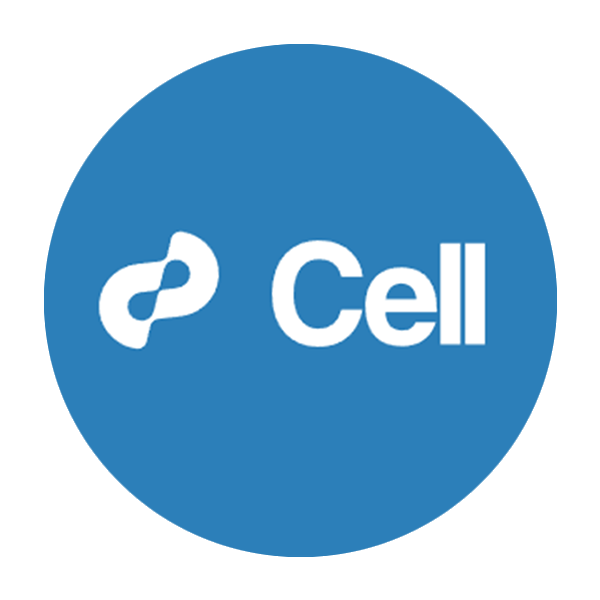
Zepecki, J. P., K. M. Snyder, et al.
“Regulation of human glioma cell migration, tumor growth, and stemness gene expression using a Lck targeted inhibitor.”View Publication

The vDAQ requires a desktop PC with one PCI Express x8 slot. While a physical x8 slot is required, only x4 link width will be utilized. One six pin PCI Express power connector is required. Power capacity of PC power supply should also be considered when adding vDAQ to a PC. vDAQ will draw 5 – 20 W depending on design loaded on FPGA. The host PC must run Microsoft Windows 10 operating system. We also offer integrated PCs systems designed to run ScanImage with the vDAQ.
Yes. As long as you have enough IO’s available, the same vDAQ card can control multiple microscopes. You can even run more than one instance of ScanImage on a single PC.
The clock input can sync down to 1MHz.
Currently, the vDAQ can only be controlled using a Basic or Premium version of ScanImage.
"I rarely have encountered a company so committed to support and troubleshooting as MBF."

Andrew Hardaway, Ph.D. Vanderbuilt University
"MBF Bioscience is extremely responsive to the needs of scientists and is genuinely interested in helping all of us in science do the best job we can."

Sigrid C. Veasey, MD University of Pennsylvania
"I am so happy to be a customer of your company. I always get great help related with your product or not. With the experienced members, you are the best team I've ever met. All of your staff are very kind and helpful. Thank you for your great help and support all the time."
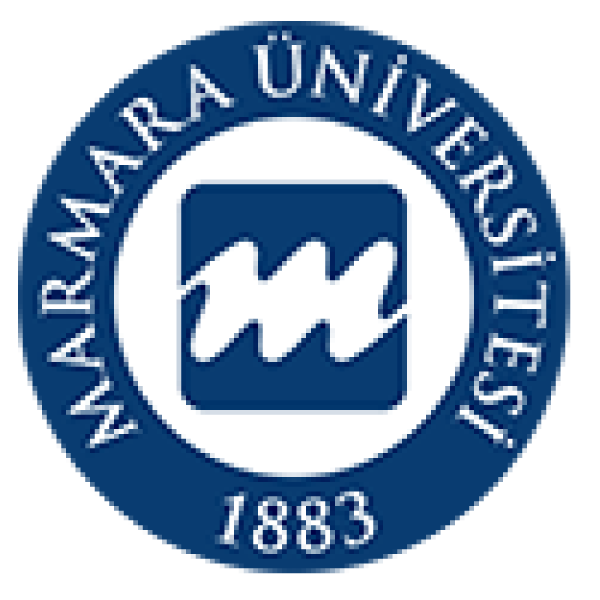
Mazhar Özkan Marmara Üniversitesi Tıp Fakültesi, Turkey
"We’ve been very happy for many years with MBF products and the course of upgrades and improvements. Your service department is outstanding. I have gotten great help from the staff with the software and hardware."

William E. Armstrong, Ph.D. University of Tennessee
"Our experience with the MBF equipment and especially the MBF people has been outstanding. I cannot speak any higher about their professionalism and attention for our needs."

Bogdan A. Stoica, MD University of Maryland
"MBF provides excellent technical support and helps you to find the best technical tools for your research challenges on morphometry."

Wilma Van De Berg, Ph.D. VU University Medical Center - Neuroscience Campus Amsterdam
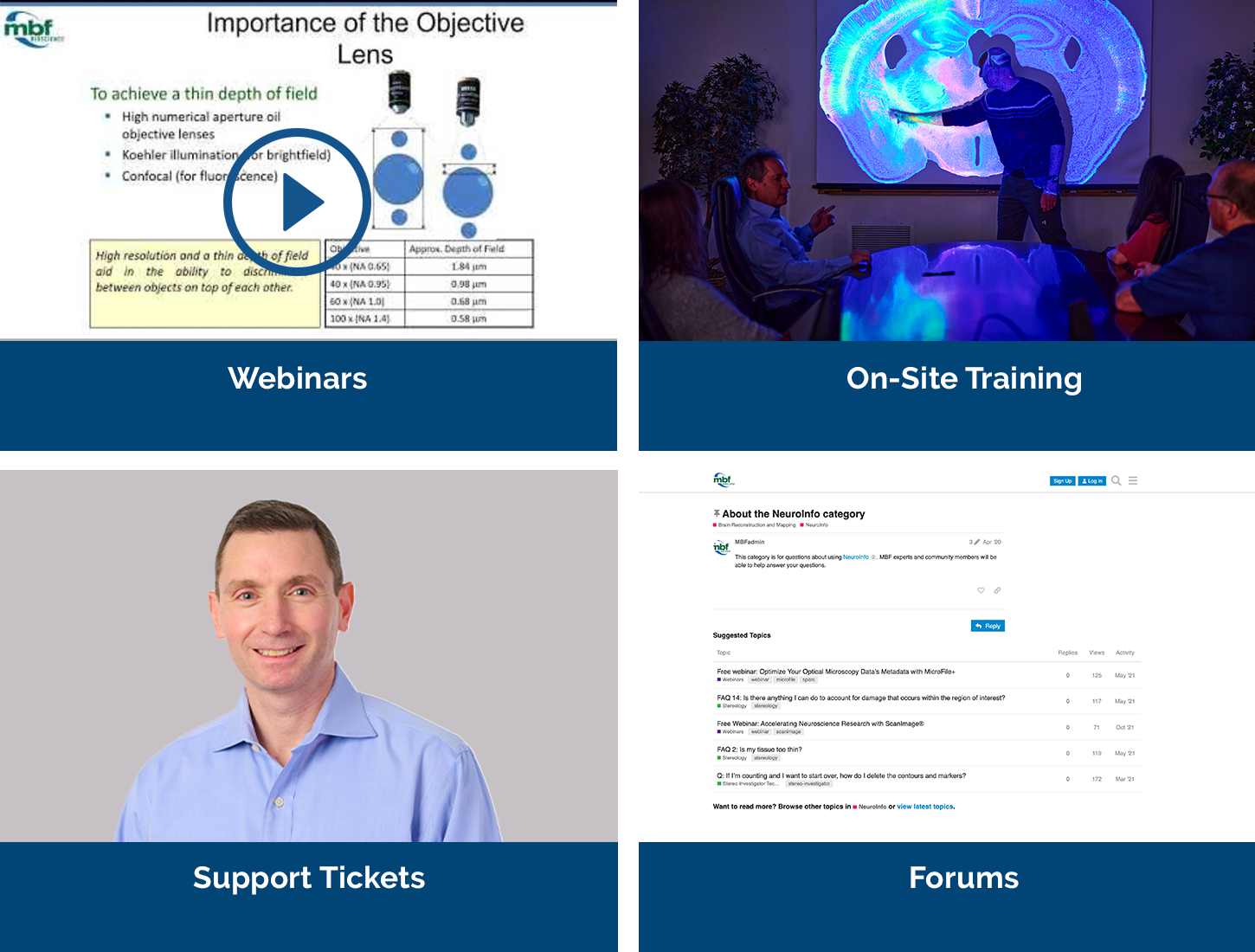
Our service sets us apart, with a team that includes Ph.D. neuroscientists, experts in microscopy, stereology, neuron reconstruction, and image processing. We’ve also developed a host of additional support services, including:
At MBF, we’ve spent decades understanding the needs of researchers and their labs — and have a suite of products and solutions that have been specifically designed for the needs of today’s most important and advanced labs. Our commitment to you is to spend time with you discussing the needs of your lab — so that we can make sure the solutions we provide for you are exactly what you’ll need. It’s part of our commitment to supporting you — before, during, and after you’ve made your decision. We look forward to talking with you!


